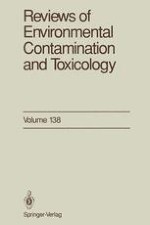International concern in scientific, industrial, and governmental communi ties over traces of xenobiotics in foods and in both abiotic and biotic envi ronments has justified the present triumvirate of specialized publications in this field: comprehensive reviews, rapidly published research papers and progress reports, and archival documentations. These three international publications are integrated and scheduled to provide the coherency essential for nonduplicative and current progress in a field as dynamic and complex as environmental contamination and toxicology. This series is reserved ex clusively for the diversified literature on "toxic" chemicals in our food, our feeds, our homes, recreational and working surroundings, our domestic animals, our wildlife and ourselves. Tremendous efforts worldwide have been mobilized to evaluate the nature, presence, magnitude, fate, and toxi cology of the chemicals loosed upon the earth. Among the sequelae of this broad new emphasis is an undeniable need for an articulated set of authoritative publications, where one can find the latest important world literature produced by these emerging areas of science together with docu mentation of pertinent ancillary legislation. Research directors and legislative or administrative advisers do not have the time to scan the escalating number of technical publications that may contain articles important to current responsibility. Rather, these individu als need the background provided by detailed reviews and the assurance that the latest information is made available to them, all with minimal literature searching.
